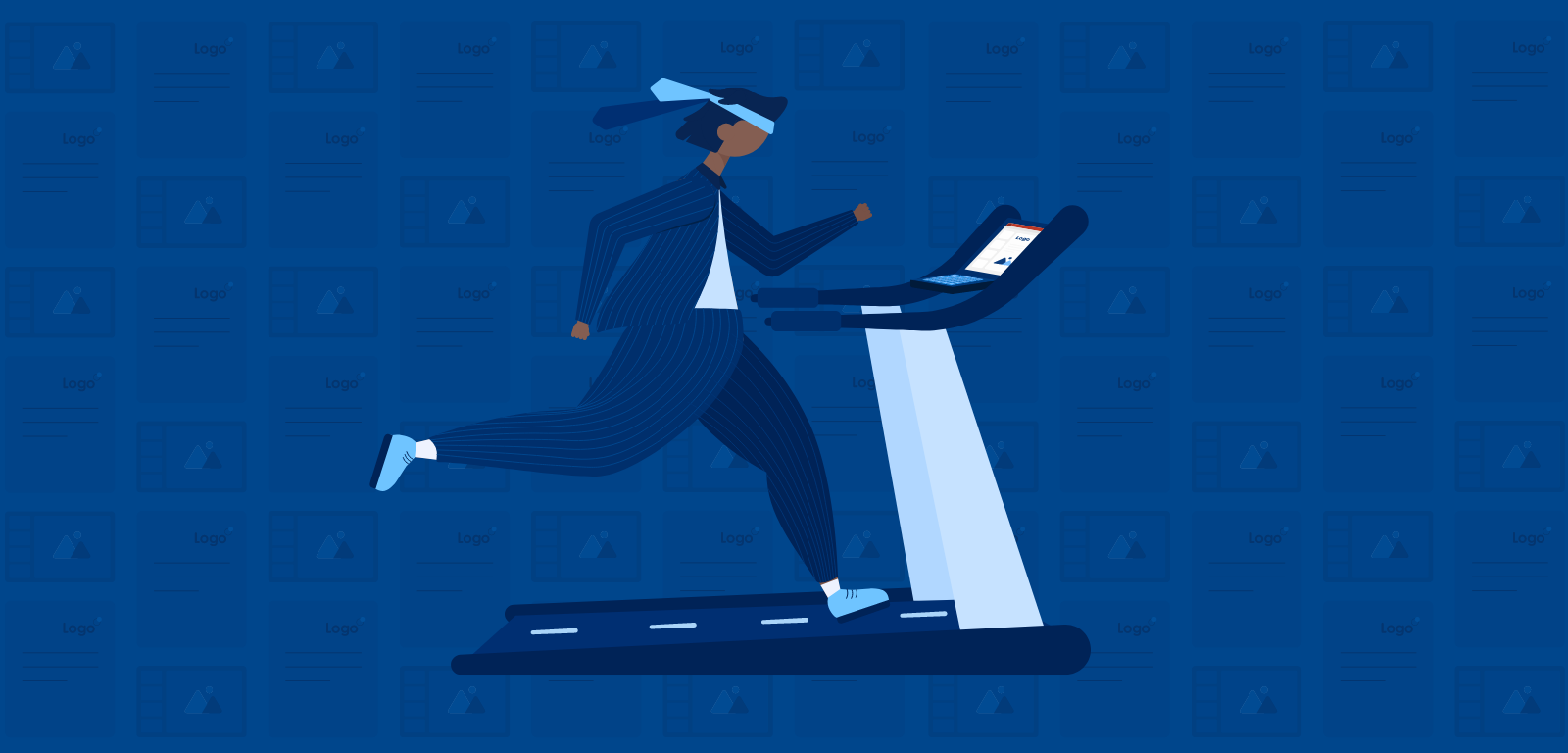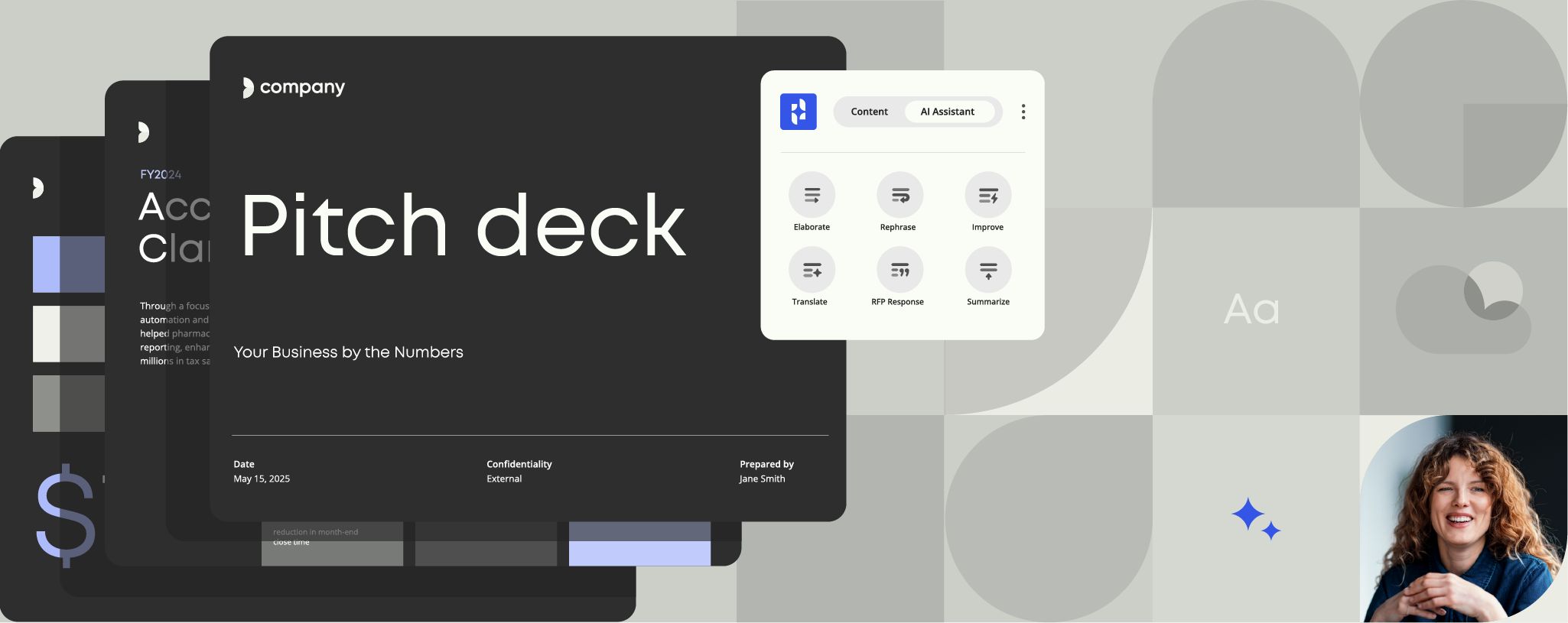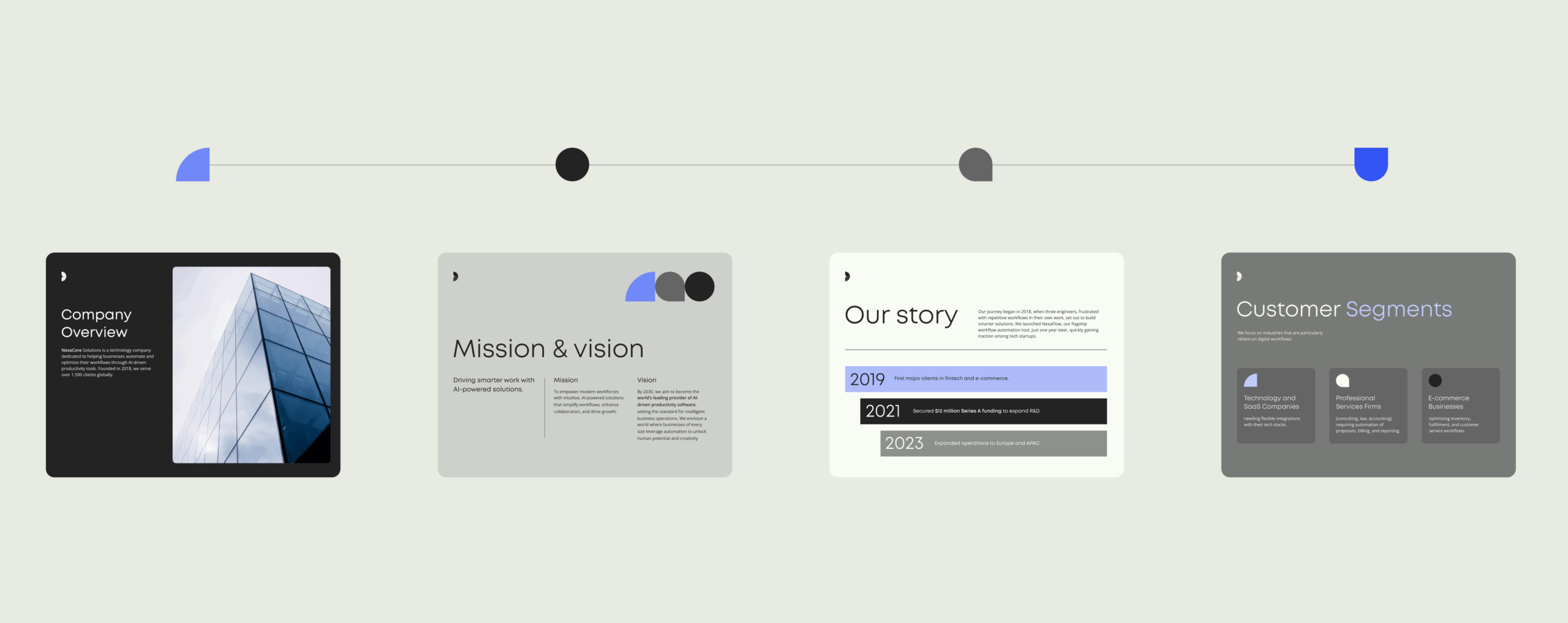How to streamline proposal creation for your team

A good proposal is a work of art. But the process of creating that proposal? That’s science.
Sales and other professional services teams can work on hundreds of proposals a year, each of which can take up to 24 hours to write. And while success rates vary, it’s often fewer than 50% of proposals that actually lead to a sale.
The bigger a company is, the harder it is to standardize assets, optimize templates, and make sure everyone is working with the most up-to-date materials, especially for remote or distributed teams at scale.
It takes a clever combination of design and technology to streamline the proposal creation process. But with the right proposal generation software, it is possible to both simplify the whole process while improving your team’s win-rate.
Standardization is great — when standards are high
The number one tip for writing proposals is to personalize th<em for the prospect.
But the truth is that a majority of the information within any proposal is going to be standardized — and that is as it should be.
The problem is, how can the people who write and review proposals collaborate to ensure they’re using all the best, most up-to-date assets, without duplicating efforts?
The current status is pretty bleak. According to a global survey of full-time professionals at large companies, 73% said they don’t use the latest version of approved internal content when creating new work. Instead, almost half (47%) said they choose to save over previous versions of their own content, while over a quarter (26%) simply start from scratch every time.
No wonder a jaw-dropping 94% of respondents said they regularly find mistakes and errors in content — even after it’s already been approved.
Companies have to face the reality that employees will always follow the path of least resistance, naturally gravitating toward efficiency, even if it steers them off-brand.
So it’s important not only to provide your team with the best proposal templates and materials, but to ensure that they’re easily accessible and fit naturally into an optimized workflow.
Managers save 4 hours a week on proposal review with Templafy
Hot off the automated document assembly line
The best way to do that is to automate as much of the process as possible.
When managed well, automating proposal creation reduces the possibility of human error, increases brand compliance, and decreases the amount of time needed to create each document.
Proposal automation tools can provide dynamic templates, centralized asset libraries, CRM plug-ins, and other features directly within the software teams already use, like Word or Google Docs. This makes it easy to pull in company details, formatting, legal notices, and more without having to switch between programs.
And by streamlining the reusable elements, proposal writers are better able to focus on the sections that require original contributions without wasting time or accidentally copying now-outdated content from previous versions.
From pitch deck to masterpiece
Proposals, presentations, and contracts are all critical business documents for any growth or sales team. But supporting that function are a host of other roles: designers, marketers, brand managers, and yes, legal compliance specialists.
By building strong internal processes — supported by document automation software — you can empower everyone who has a stake in the creation of these documents.
Creative teams can automatically update and deploy the latest visual and textual assets, while legal teams can ensure everyone is using the right language and disclaimers. And IT teams can sit back and watch it all happen without ever opening a ticket.
It may never be possible to automate 100% of a pitch, but by creating an almost scientific method to the proposal creation process, we can focus on turning the rest of the pitch into a work of art.



